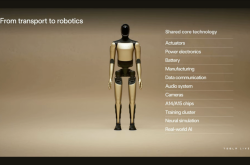Baidu is Redefining Search in the Age of AI
![]() 07/08 2025
07/08 2025
![]() 426
426
Introduction: As Gartner asserts, AI search is emerging as the "HTTP of the AI world," fundamentally transforming the landscape of traditional search engines.
Baidu stands at a crossroads, where its leadership in traditional search faces new challenges, yet its pioneering role in AI and large models positions it at the forefront of AI capabilities. Burdened by history yet enriched with experience, Baidu urgently needs to innovate, a task that is fraught with difficulties. In a recent low-key event, Baidu Search unveiled its most significant overhaul in a decade, signaling its commitment to move beyond traditional search.
01 Baidu's Accelerated Transition Away from Traditional Search
In a media interview, Baidu expressed its accelerated push to move past search, particularly traditional search. The quicker this transition occurs, the sooner Baidu can shed path dependencies and rigid frameworks, fostering innovation unencumbered by the past. This acceleration appears to be a consensus within Baidu.
To effectively forget the past, Baidu is bringing in talent from the AI-native era. The workforce at Baidu Search is rapidly becoming younger, with most keynote speakers at the recent "Search AI DAY" in their 20s. These individuals are leading the charge, embodying Baidu's self-transformation.
This echoes my own experience joining Baidu in 2006, when the most dynamic team members were also in their 20s.
This youthful exuberance is crucial, as the pace at which AI search is disrupting traditional search is faster than anticipated. The core evolutionary metric for search engines is the efficiency of information acquisition.
The first generation of search was Yahoo!'s directory-based model, relying on manually curated website directories to help users find needed sites. Despite its seeming clumsiness, Yahoo! reached a peak market value of $125-128 billion in 2000, making it one of the world's most valuable internet companies.
The second generation shifted to keyword-based search, judging relevance by the frequency of keywords on the target webpage. However, this model was easily manipulated, paving the way for the third generation.
The third generation confirmed relevance through the analysis of hyperlinks in anchor text. Google and Baidu independently developed this generation almost simultaneously, each becoming global internet giants and generating immense wealth and value.
In summary, the first three generations of search evolved from providing websites to webpages and finally to highly relevant webpages.
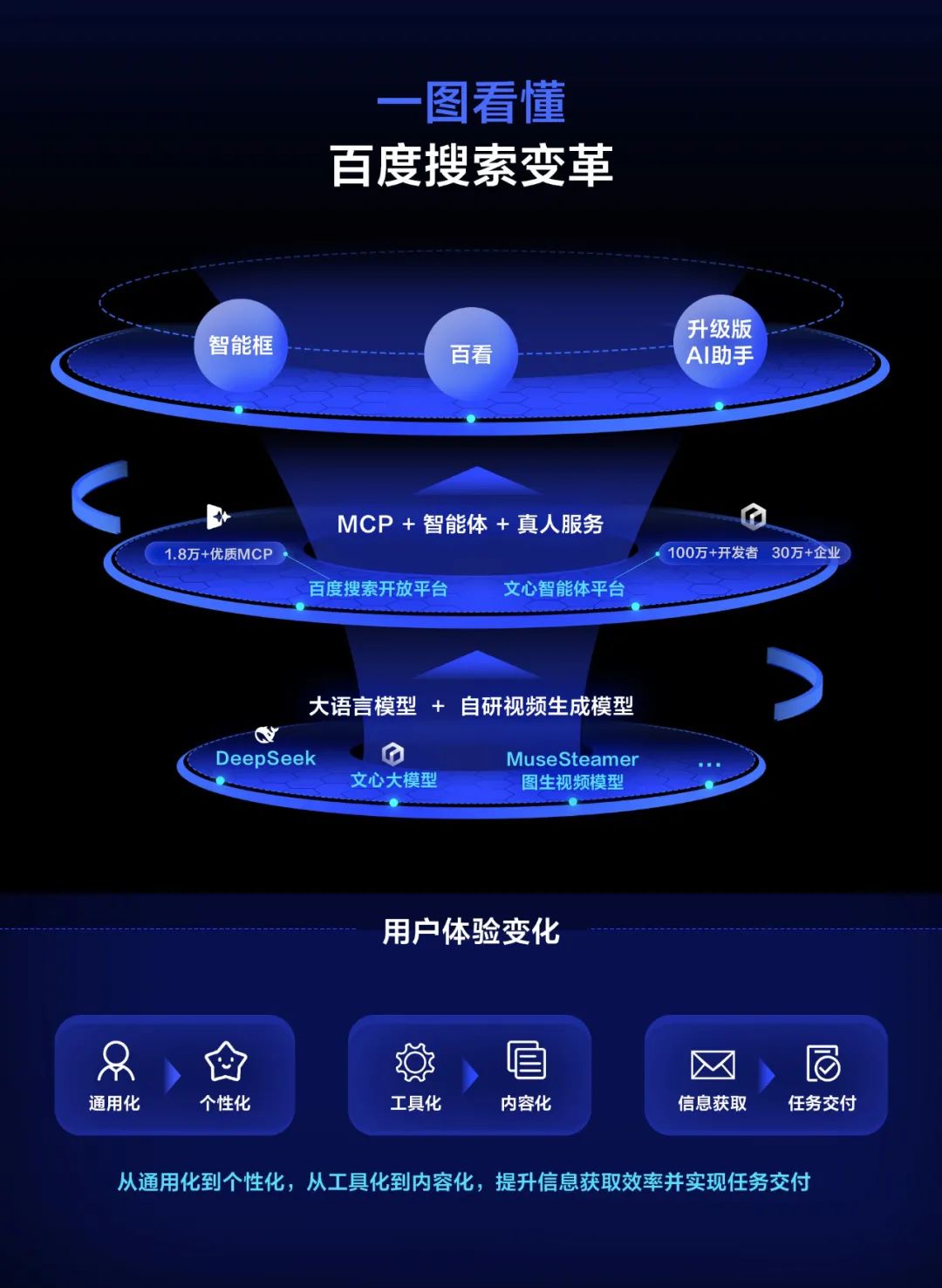
A notable feature of the third-generation search market is the difficulty for latecomers to catch up. Early movers like Google and Baidu have amassed vast data pools over decades, making it hard for newcomers to scale. Additionally, search engines need to continuously crawl, store, and process massive webpages, an initial infrastructure investment that new players struggle to afford.
However, AI search virtually obliterated these decades-old competitive barriers overnight.
- Massive webpage index databases became less crucial as the AI+search technical path emerged. Using Retrieval-Augmented Generation (RAG) technology, combined with real-time data crawling and large model reasoning, AI search generates answers without relying on extensive historical index databases.
- The third generation relied on massive data pools and manual optimization for accurate "keyword extraction," whereas AI search directly parses user intent through Natural Language Processing (NLP), outpacing traditional search in accuracy and speed.
- Open-source large models (like Llama, GPT, ERNIE Bot, and others) lowered the technical threshold, allowing startups to leverage pre-trained models for search products, intensifying market competition.
All these factors underscore that Baidu's traditional search no longer enjoys a prolonged period of gradual adjustment and evolution. The critical point of traditional moat collapse could arrive unexpectedly.
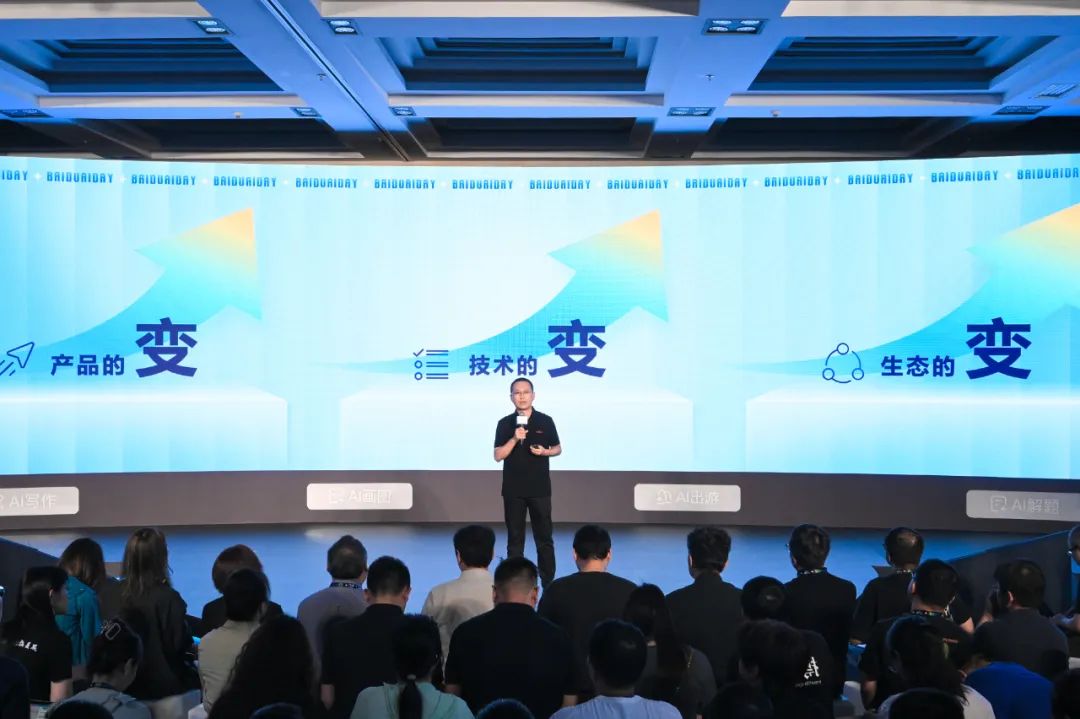
Thus, Baidu must run faster than the trend; otherwise, it risks losing its core competitiveness and fundamental business model. This time, the threat is imminent.
02 Navigating the New Search Landscape
The first opportunity point for Baidu's new search is what I call "sense of direction."
While AI search has the potential for a revolutionary impact, creating a highly sophisticated AI search is no small feat.
Traditional search's high penetration is due not only to its ability to meet rigid information acquisition needs but also to its simplicity, refined over numerous iterations. Enter keywords, press enter, wait for the answer – minimalist and efficient, accessible to all.
However, when using AI+search tools or conversational agents today, users encounter abundant and complex options.
Within a search-enabled app, users can find numerous ways to obtain information/content, including but not limited to global search, private domain search, AI-transformed generative search, conversational agents with reasoning and deep research capabilities, text-to-image, text-to-video, AI-assisted writing, and more. These tools function differently, provide results with varying structures, and take anywhere from seconds to over ten minutes.
The era of webpage search as the sole active information acquisition entry is over, replaced by a new technical path that introduces higher learning and usage costs, as well as increased usage time.
For users, what is always needed is a simplified information acquisition experience, not complexity; for enterprises, understanding the direction of search becomes critically important.
It can be inferred that the general direction of AI search evolution should be divided into three stages.
The first stage, the "parallel" stage, involves no integration, with users manually switching between different information acquisition tools within their workflow.
The second stage, exemplified by Baidu's recent decade-long search product overhaul, can be termed the "step-by-step" stage. It features an enlarged search box integrating multiple formats within the same entry, such as AI-generated cameras, upgraded AI assistants, etc. Users can "climb the steps" according to their needs' complexity.
The third stage, which I believe is decisive, is the "adaptive" phase of AI+search. In this phase, users no longer need to select various options and modes. Instead, the search engine autonomously deconstructs and understands the searcher's needs, then decides on the efficiency of information provision, content amount, structure, and form, based on those needs. In terms of usage, it regresses to simplicity while offering extremely rich content.
However, from the current perspective, the adaptive approach is the most promising yet also the most challenging to implement due to the unpredictability of human needs.
Two decades ago, Baidu often faced the question: if a user inputs "mobile phone," how can one determine if the user wants to read a review or access a purchase page? In an era without AI, this question was unsolvable, hence traditional search provided "high relevance" but not "answers."
Today, NLP has improved this experience, yet no product has truly perfected this model. AI+search is powerful in information acquisition and content generation but still belongs to the "advanced intelligent assistance mode" rather than true "autonomous driving mode" in terms of understanding user needs.
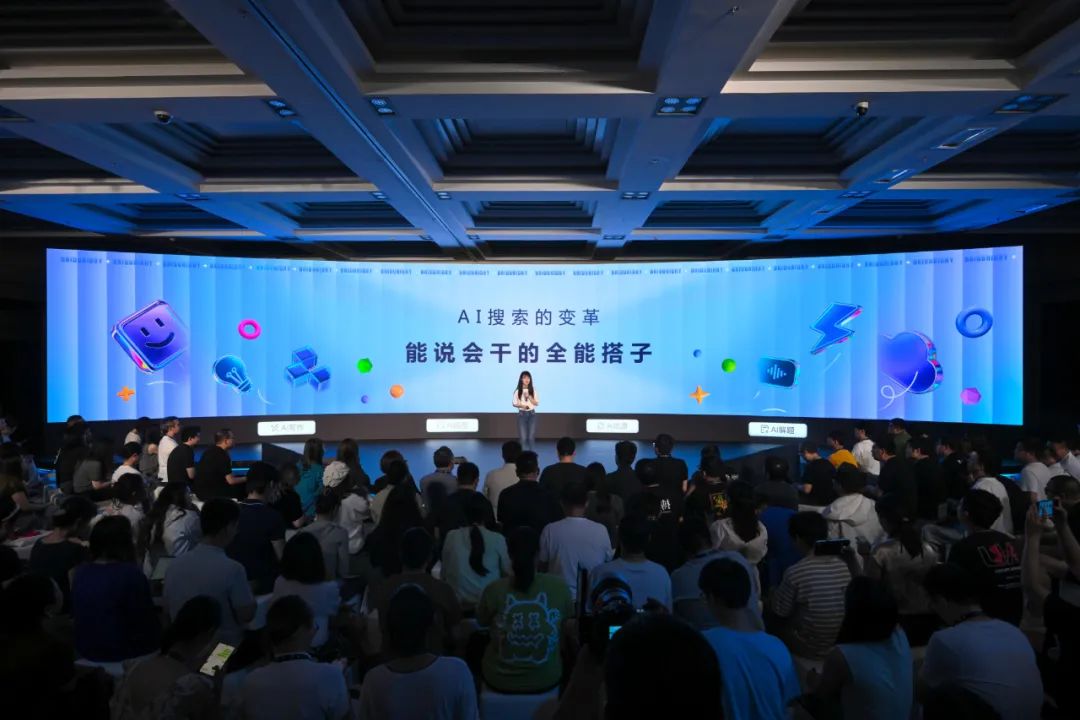
The newly upgraded Baidu Kan function already analyzes and matches user needs at the output end, prioritizing the most useful and suitable multimodal rich media content for users. It may not be perfect yet, but it is infinitely close to "global adaptability," akin to intelligent driving advancing from Level 3 to Level 4. Early adopters will have a significant advantage, representing a disruptive lead.
This may be Baidu's first critical opportunity point – whoever has a better product direction sense is more likely to seize the lead and win.
03 AI Empowering Baidu Search to Overcome Its Biggest Challenge
Changes to the search box are merely alterations in interaction methods. Far more significant are the expansion of search boundaries, content heterogeneity, and ecosystem nurturing.
Although Baidu's AI search is still in its exploratory phase, AI has already helped Baidu Search overcome its biggest challenge.
This challenge is the continuous compression of Baidu's search boundaries over the past decade of mobile internet development.
Before the rise of AI+search, Baidu's primary issue was the shrinking public domain (open webpages), with high-quality content concentrating in the private domain (TikTok, Kuaishou, Xiaohongshu, etc.). This explains why many private domain giants developed their vertical search engines.
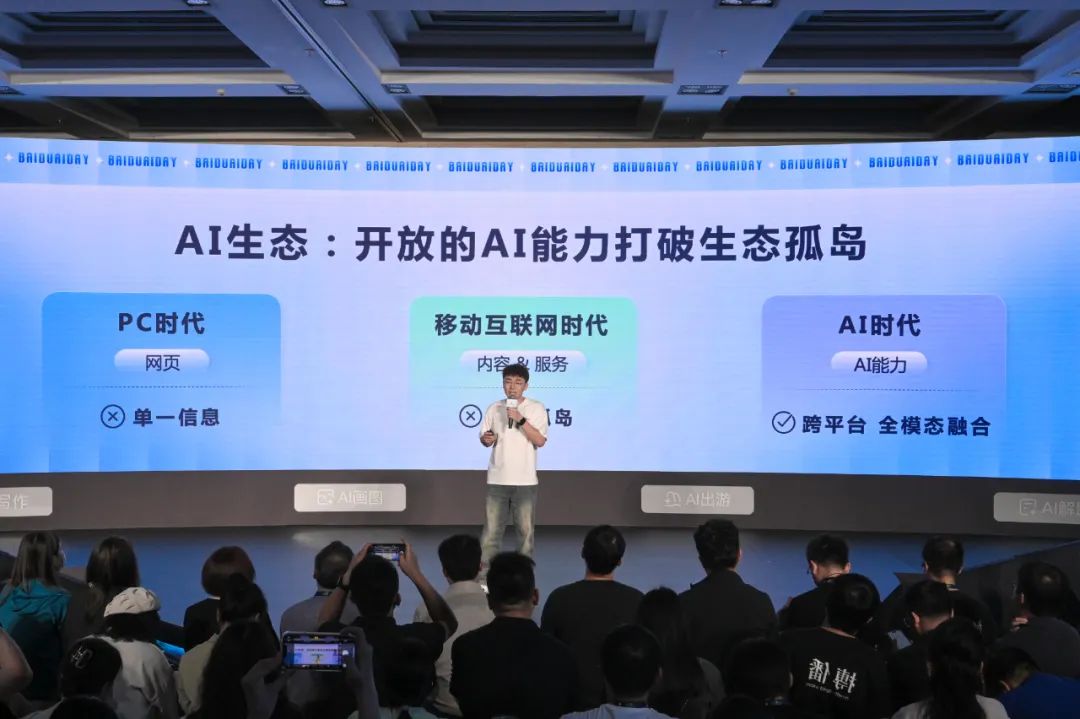
Strictly speaking, these private domain searches only provide more vertical information for public domain searches, lacking a true generational replacement in search technology. Thus, they make public domain searches "uncomfortable" but cannot fully replace them, instead fragmenting the overall search experience.
However, for Baidu, failing to address the issue of total information coverage would continue to erode its overall value.
But with the rapid development of AI, especially generative AI, the challenge posed by private domain searches to Baidu is no longer significant. AI has reconstructed content production, vastly expanding the scope of search from "finding relevant content" to "finding solutions." The shrinkage of the public domain or the rise of private domain searches are no longer Baidu's primary concerns – AI can create and generate high-quality content independently, and using AI to generate content, especially professional content or service-packaged professional content, has become an ecosystem and even a business model supported by the MCP protocol.
Although the current description of the "Baidu Kan Plan" is still basic, the changes it brings to Baidu and the search industry are disruptive.
On one hand, the Baidu Kan Plan transforms search results into something entirely new. Previous results were mainly text, supplemented by images and videos, with "relevance" as the paramount metric.
Now, the Baidu Kan Plan introduces an information space blending images, text, short videos, and interactive modules. For instance, searching "children's fever medicine" displays a medication list on the first screen, followed by doctor interpretation videos and online consultation entries when scrolling down.
Are these search results? Yes, but they are profoundly different from traditional ones, offering richer, deeper, and highly usable search outcomes.
On the other hand, the Baidu Kan Plan provides deeper insights and the ability to deliver high-quality results. In the past, conducting in-depth research required numerous searches, relying on human brains to collect fragmented content and cross-reference it.
Now, through multi-level reasoning chains and thought chains technology, Baidu's deep search simulates the human exploration process of "perception - planning - execution." For example, asking a health question now cross-verifies medical literature and generates personalized advice based on the user's medical history, with a traceable reasoning process.
Finally, and crucially, in terms of content ecology, the synergistic breakthrough of generative AI and rich media greatly enriches users' search results and optimizes their experience. Providing users with "enough good content" is always a vital criterion for evaluating a search engine, and "if there is no good content, create enough good content for users" has been Baidu's consistent approach.
Historically, Baidu faced a similar challenge in 2003 when its search technology was mature but high-quality Chinese internet content was scarce. Instead of waiting, Baidu launched Tieba, a pivotal milestone in the development of the Chinese internet community.
More accurately, Baidu Tieba, Baidu Zhidao, and Baidu Baike collectively built Baidu's content ecosystem in the Web 2.0 era, forming a closed-loop community centered on user-generated content (UGC). This supported Baidu's transformation from a search engine to a comprehensive information service platform, significantly addressing the issue of insufficient high-quality content.
Over two decades later, the extensive and high-quality content ecosystem accessible to Baidu, or its potential, far surpasses the user-generated content (UGC) of the Tieba era, which was purely human-driven.
Previously, Baidu was confined to searching for "existing" content. Today, Baidu Kan offers content that is "created if it doesn't exist."
Users have transformed from mere content consumers to producers, and the AI-generated content they create feeds back into the search database, fostering a virtuous cycle of "creation - search - recreation," thereby diminishing the content monopoly of private domain platforms.
In this context, while private domain platforms may temporarily monopolize users' original content, in the long run, generative AI enables search engines or agents to autonomously produce text, images, videos, and other rich media content tailored to user needs. It's a realm where "if there's a need, there's an answer."
Moreover, it's no longer limited to simple text content; it supports a mixed output of images, text, audio, and video, and can even generate creative videos in real-time based on user instructions.
In the future, you won't even fathom what Baidu Kan will create for you, because with the right tools, human creativity knows no bounds.
The era of private domain giants unilaterally blocking content from public domain search giants has forever faded with the ascendancy of generative AI.
04 Objectively Altruistic Ecosystem Construction
I wish to emphasize that as crucial as generative capabilities are, the integration of diverse, heterogeneous, and long-tail services through the MCP ecosystem is equally significant.
MCP has recently gained immense popularity, and Baidu Search's open platform has access to over 18,000 high-quality MCP (Model Calling Protocol) services, spanning scenarios such as finance, e-commerce, lifestyle, and health, with plans to encompass all verticals in the future. Baidu is integrating vertical service content that private domain platforms cannot cover or that does not exist or is scarce into searchable content through the open MCP ecosystem.
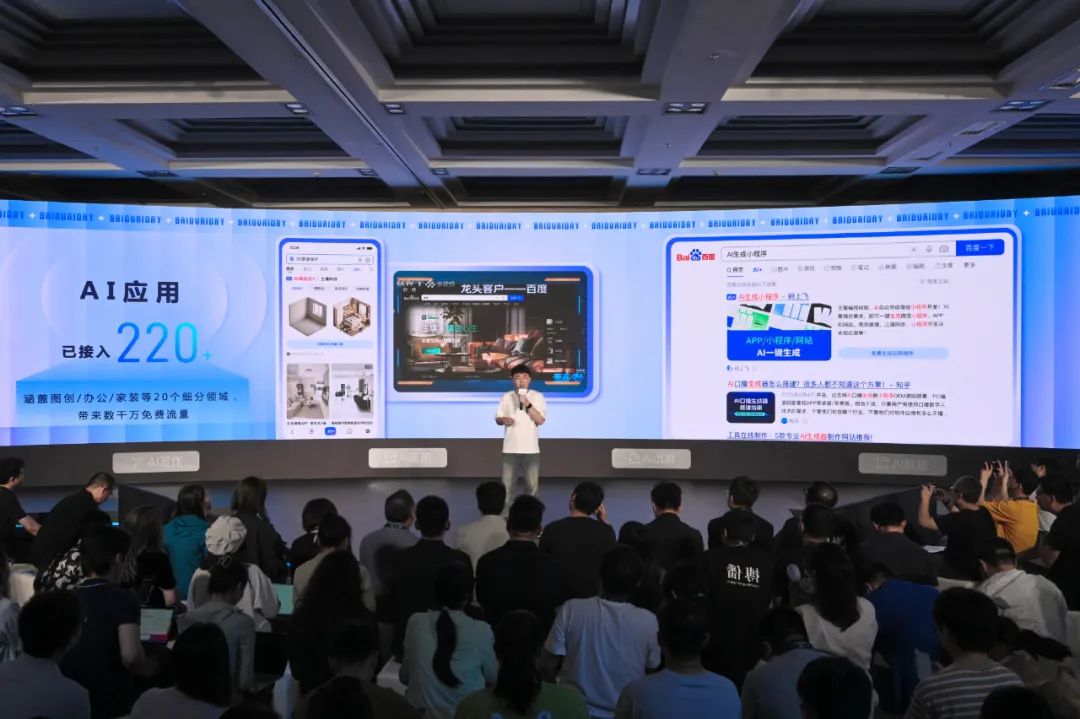
To briefly explain, MCP is catalyzing a revolution in AI interaction paradigms with a standardized bidirectional communication framework. Its strategic value is heralded as the "USB interface in the realm of intelligent terminals," providing a novel solution to the complexity of integrating AI tools.
To a certain extent, the ultimate model of future AI search hinges on the maturity of its MCP ecosystem.
In the simplest terms, if a search engine is an operating system, then an MCP service is akin to an APP. Diverse APPs encapsulate myriad types of content, capabilities, and services. The proliferation of APPs ultimately determines the success of an ecosystem.
Therefore, for the MCP ecosystem that Baidu is nurturing, there are two key advantages:
Firstly, the development of MCP necessitates volume, and Baidu is successfully converting its 700 million monthly active users into traffic inlets for AI applications.
Secondly, the flourishing of MCP requires the ecosystem leader to embody an objectively altruistic element. Baidu not only embodies an altruistic spirit but also has a spillover effect of technological dividends. It not only pioneered the full compatibilization of the MCP protocol in China, becoming one of the world's pioneering technology giants to support this protocol, but also launched Baidu Intelligent Cloud Qianfan AppBuilder, the nation's first large model application development platform that supports MCP, enabling developers to seamlessly invoke MCP Server tools and transform their own components into standardized services with a single click, fostering efficient sharing within the tool ecosystem.
Conclusion
From user growth, market share to efficiency enhancements, the disruptive speed of AI + search has exhibited exponential characteristics. In Baidu Search, the proportion of AI-generated content surged from over 10% to over 20% in less than a year; Deepseek amassed 10 million users in just 20 days; it took Google a full decade for its search market share to dip below 90%, whereas AI search tools captured 15% of the search market share in merely six months. The underlying logic behind this "tenfold speed" transformation lies in AI technology reconstructing the foundational architecture of information retrieval.
Regarding this transformation, we discern three advantages that Baidu possesses:
Firstly, vigilance. Many exemplary products of their time (such as Nokia's mobile phones) declined because they were sluggish in responding to crises, stubbornly clinging to the belief that they still held an edge, only to see the era shift overnight.
However, Baidu has long been cognizant of the intergenerational shift facing search and commenced strategizing in advance, positioning itself for success.
Secondly, technological prowess. The crux of AI + search lies in AI. Baidu is a front-runner in this domain in China, boasting a four-tier architecture and full-stack AI capabilities.
Finally, and most crucially, as the new era of search dawns, Baidu has no option but to triumph. It must persevere until the end.

